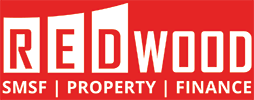SMSF Frequently Asked Questions
- Why are SMSFs such as talking point?
SMSFs have been around for many years, however have grown significantly in the past 5 years due to cheaper compliance costs and more information to determine if a SMSF is right for you. Further, many Australian’s want control, and are not satisfied with the returns/ performance of their employer sponsored fund.
- Is there a minimum balance before I set up a SMSF?
No there is no minimum balance, SMSFs are about strategy, it is important to develop a investment strategy and invest in a diversified portfolio. Many Australians invest in property using a borrowing or invest in precious metals which they are unable to do with their employer sponsored fund.
- What are the benefits of SMSF?
- 1. Control
- 2. Choice
- 3. Flexibility
- 4. Tax
- What are the risks of SMSF?
SMSFs are governed by Superannuation Law – Trustees must satisfy the provisions of Superannuation Law at all times – with the key function of the SMSF being for the Sole Purpose of your retirement. Failure to do so may result in heavy penalties from the ATO.
- What are the annual costs to run my SMSF?
Redwood offers a fixed fee from $98 a month including GST – refer to SMSF fees for more information. Fees are fixed and not based on the number of transactions or asset value of the SMSF
- What can I invest in?
This is a broad question, you can invest in accordance with your Trust Deed and stated Investment Strategy.
- Can I borrow to invest in property?
Yes, you can borrow to invest in property.
- What type of property can my SMSF buy?
You can purchase either residential or commercial property within your SMSF. Your SMSF Trust Deed will state your borrowing powers and you investment strategy should reflect that you are borrowing to invest in property. Your investment strategy should be updated regularly.
- What is a Limited Recourse Borrowing Arrangement?
A Limited Recourse Borrowing Arrangement (“LRBA”) is a unique loan structure where the only SMSF asset that the lender (or any other party) has recourse to is the property that was purchased using the loan, if the fund is unable to meet its loan repayments.
A LRBA requires a security trustee (“bare trustee”) to beneficially hold the asset on behalf of the SMSF. The ‘bare trust’ arrangement recognises that the asset is to be held by the security trust until the debt is repaid, at which point legal ownership can pass to the SMSF. A LRBA can
- Can I use bare trust for multiple properties?
No, a LRBA can be used to purchase a ‘single acquirable asset’. Therefore, each property requires a separate bare trust.
- When should my Bare Trust be executed?
Generally before the contract of sale is signed. In certain states such as Queensland, the bare trust is required to be executed before the contract of sale is signed. Further, if you are using a corporate trustee, the bare trustee company will generally be included on the contract of sale. Therefore the bare trustee company should be incorporated before the contract of sale is signed.
- How much does a Bare Trust cost?
Redwood Advisory provides a specialist bare trust service for a fixed fee of $1925. Read more in relation to bare trust.
- How long does it take to set up an SMSF?
Once an application is received by Redwood Advisory, your SMSF will be set up in one business day.
- How long does it take to set up a bare trust?
Once an application is received by Redwood Advisory, your SMSF will be set up in one business day.
- Can my SMSF loan be used for multiple properties?
No, under the ‘single acquirable asset’ principle, each property requires a separate bare trust and separate loan.
- Why do I need a Limited Recourse Borrowing Arrangement?
As a general rule, a SMSF cannot borrow. However, in 2007, S67A of Superannuation Law was introduced to allow borrowing in limited circumstances and specifies a number of requirements to be met to ensure compliance with Superannuation Law. This included the ‘single acquirable asset’ requirement and ‘limited recourse’ loan.
- Will the bank require a personal guarantee?
Yes, to our knowledge all lenders with a SMSF product require a personal guarantee.
- Should I have a corporate trustee or individual trustee?
Loan to Value Ratios will differ for individual and corporate trustees. For flexibility and asset protection, a corporate trustee is preferred. Further, certain lenders will lower the LVR for individual trustees, i.e. from 80% max lowered to 72% max.
Redwood Advisory recommends a conversion to corporate trustee prior to purchasing property in a SMSF. Read more
- How much can I borrow to purchase residential SMSF property?
The maximum LVR for residential property is 80%. For example, if I buy a property for $400,000, your maximum loan amount is $320,000. Therefore, you will require $80,000 in SMSF cash to complete a purchase plus acquisition and loan costs.
- How much can I borrow to purchase commercial SMSF property?
The maximum LVR for commercial property is 70%. For example, if I buy a property for $400,000, your maximum loan amount is $280,000. Therefore, you will require $120,000 in SMSF cash to complete a purchase plus acquisition and loan costs.
- What is the cheapest SMSF Loan interest rate?
Generally, interest rates for SMSF loans are more expensive than standard home loans and investment loans. An SMSF is a Trust, and requires a “limited recourse” loan and therefore lenders generally offer a loan at a higher rate than standard home or investment loans. Refer to our SMSF Rates Matrix for detailed information on current SMSF Loan interest rates.
- Does every lender offer a SMSF Loan?
No. A number of lenders have recently exited the SMSF Loan market including NAB, AMP and The Rock due to a crackdown by APRA in relation to investment lending. Specialist lenders such as La Trobe Financial and Resimac continue to offer SMSF Specialist products.
- What costs are involved in a SMSF loan?
Refer to our SMSF Rates Matrix for detailed information on current fees across known SMSF loan products. Generally the following fees will apply for a SMSF Loan (refer to each lender for a complete list of fees and charges):
- Application Fee
- Valuation Fee
- Monthly Administration/Service fees
- Early repayment fees
- Can I use my equity to provide a loan to the SMSF?
Yes, this is referred to as a related party loan.
- Should I obtain a SMSF loan pre-approval?
Yes, pre-approval is recommended to determine your borrowing power.
- How long does it take to obtain approval?
Once an application is submitted to a lender, pre-approval will generally be received within two business days.
- How much does it cost to obtain SMSF loan pre-approval?
Redwood are mortgage brokers – we do not charge to obtain pre-approval, so its FREE.
- What is the maximum SMSF loan term?
Loan terms will differ between lenders. Generally a maximum loan term is 30 years. Refer to our SMSF Rates Matrix for detailed information on maximum loan terms across known SMSF loan products.
- Can my SMSF Loan have an offset account?
Yes, however only certain lenders offer an offset account.
- What are the benefits of an offset account?
An offset account is a valuable feature of a SMSF loan as the cash held by the SMSF will offset the loan balance – reducing monthly interest repayments. Read More
- Does my SMSF need to be set up before I obtain an SMSF Loan?
Yes, before you purchase property, your SMSF should be established and therefore, your SMSF should be established before you apply for a loan.
- What if I repay my SMSF Loan early?
Generally lenders will charge a early repayment fee, refer to each lenders terms and conditions for early repayment fees and charges.
- How do I payoff my SMSF Loan?
Your repayments will be made from the SMSF cash balance.
- What if I cannot find a tenant for the property?
If you cannot find a tenant for your property, you will be required to service the loan repayments from either your SMSF cash reserves or contributions made to the fund. It is important to ensure you have a sufficient cash buffer after the settlement of the SMSF property.
- How much cash do I need in my SMSF after settlement of my SMSF Property?
It depends. Certain lenders will impose a liquidity requirement before settlement. For example, St George requires 10% of liquid assets at settlement. It is essential you consider your required cash reserves prior to purchasing SMSF property to ensure you have sufficient funds at settlement and in case your SMSF property is not tenanted immediately.
- Should I use a mortgage broker or a bank for my SMSF Loan?
Not all banks offer a SMSF Loan. A broker will have access to all SMSF lenders and generally will not charge for the service.
- Which name do I include on the Contract of Sale?
To ensure you do not receive double stamp duty in the future, you will need to seek advice for the name to be used on the contract of sale. The name will differ from state to state.
- Should I pay for my SMSF Property deposit from my SMSF?
Yes, a deposit should be paid from the available funds of the SMSF.
- What should I do before I sign a contact for SMSF Property?
Seek Advice from a qualified SMSF professional and solicitor. An SMSF specialist will ensure your purchase is compliant with Australian Superannuation Law and establish your bare trust. Your solicitor will review the contract of sale to ensure you are aware of all factors that impact the purchase i.e. car park on the same title for apartment. Read more for a due diligence checklist.
- Can I improve the property with a SMSF loan?
There are strict laws that apply to LRBAs. Refer to our blog for more information on the laws and regulations in relation to improvements and repairs.



